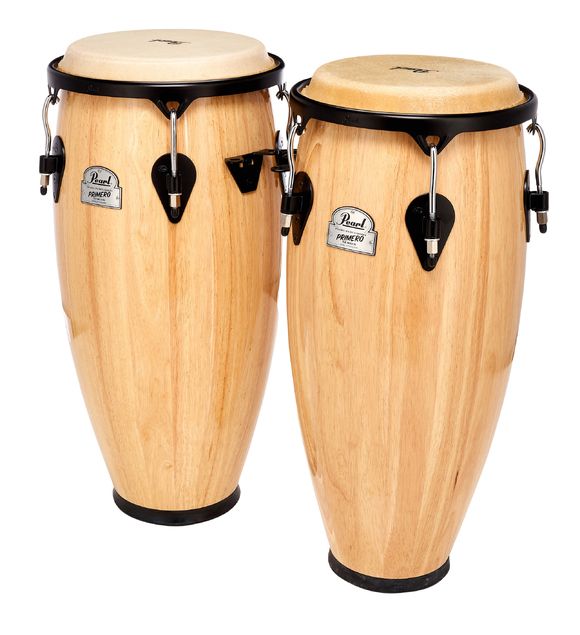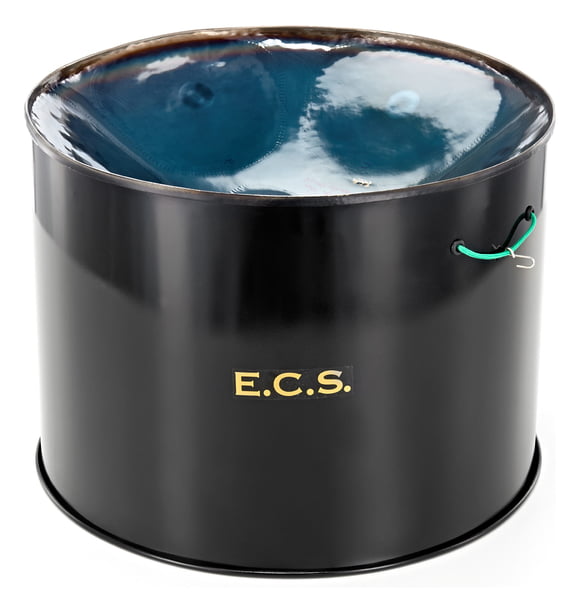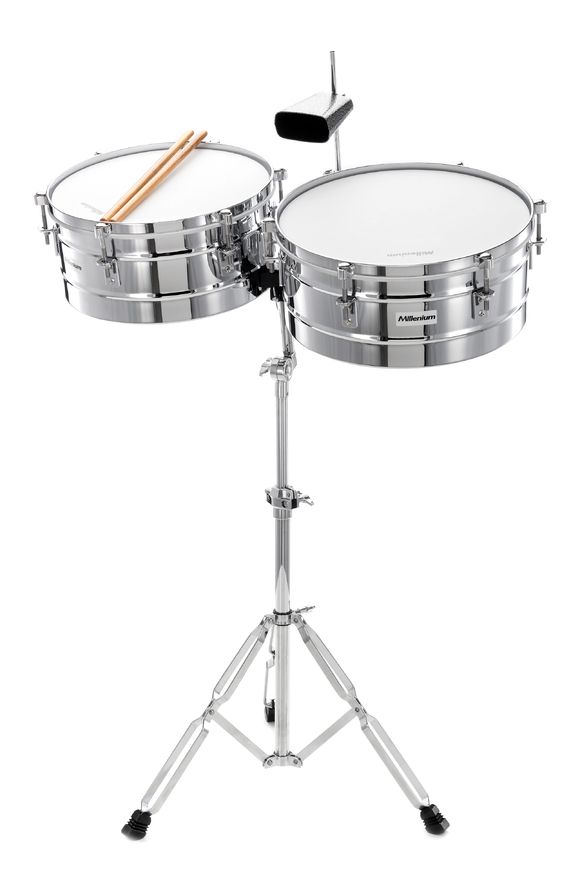6. Larger Drums
Larger drums are those that stand on feet or can be attached to a stand and are usually too big to be hand-held. The most important of these large drums in Latin American music is the conga. These drums are of Afro-Cuban origin and wooden Congas are usually made by joining together separate wooden staves (early congas may have been made from salvaged barrels). Modern congas are made from wood or fibreglass and are cylindrical in shape, bulging outwards like a barrel. They are often about 72 cm high, with a batter head on the top of the drum. Some conga drums have carved feet to hold them off the floor. Congas may also be belt-worn, but this is unusual because of their size and weight.
Professionals may also use a variety of sizes of drums, the commonest three being the quinto (smallest), conga and tumba (largest). The drums are played with the hands and fingers, and a variety of sounds can be created including bass tones, open sounds, muted tones and slaps, but many variations can be created by a skilled conguero (conga drummer). No longer reserved for Latin music, congas have found their way into contemporary pop too.

Steel drums, the national instrument of Trinidad and its famous carnival celebration, were developed around 1940 from discarded oil drums. Hammering the bottom of the drums created an inward depression with curved sound surfaces, each with distinct pitches, and a unique timbre that invariably makes one desire a fruity rum drink. Within a few years of their invention, steel drums spread throughout the Caribbean. They can be carried on a belt around ones body but are certainly more comfortably played on a stand, usually using small rubber-tipped sticks. Bands with different sizes of steel drums form ensembles capable of a wide range of chords and melodies.

Timbales have a very distinct and cutting sound. They are important instruments in Latin American music and have also gained a foothold in reggae. Timbales are tightly tuned single-headed metal drums played with thin, lightweight sticks to accentuate their overtones. Because of their cutting timbre and brightness they can be used effectively for soloing along with ensemble drums. Timbales are usually mounted on a stand which usually also holds cowbells and other smaller percussion items; cascara rhythms may be played by playing the drums metal.

Your Contacts
Product Highlights
Offers
-
Percussionsets
-
Children's Percussion
-
Congas
-
Bongos
-
Cajons
Recommended categories
Do you like what you're seeing?






